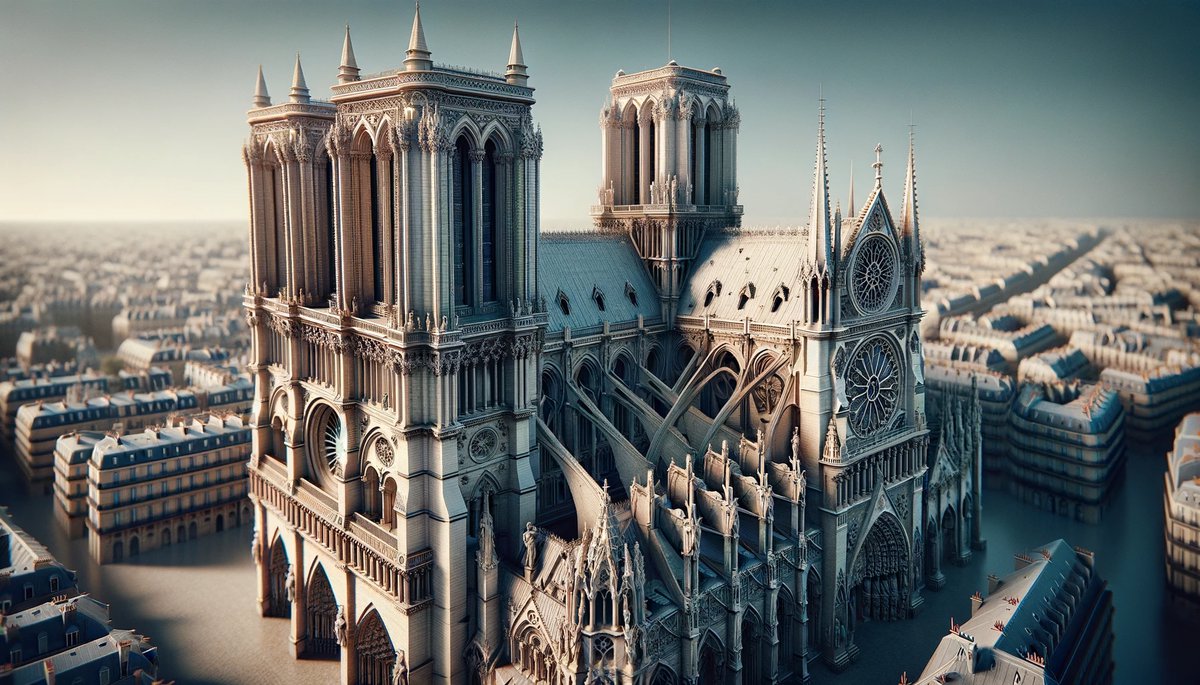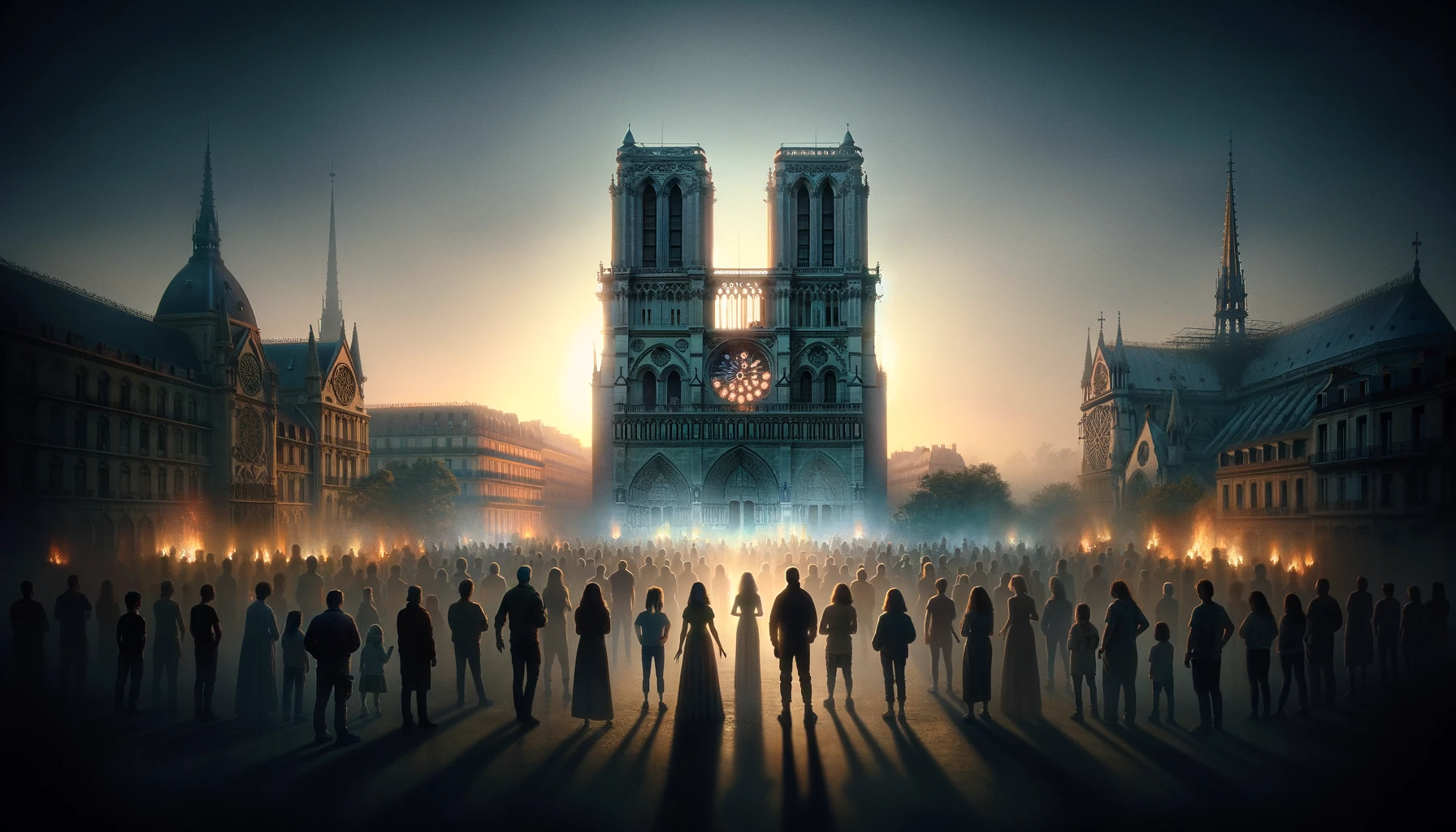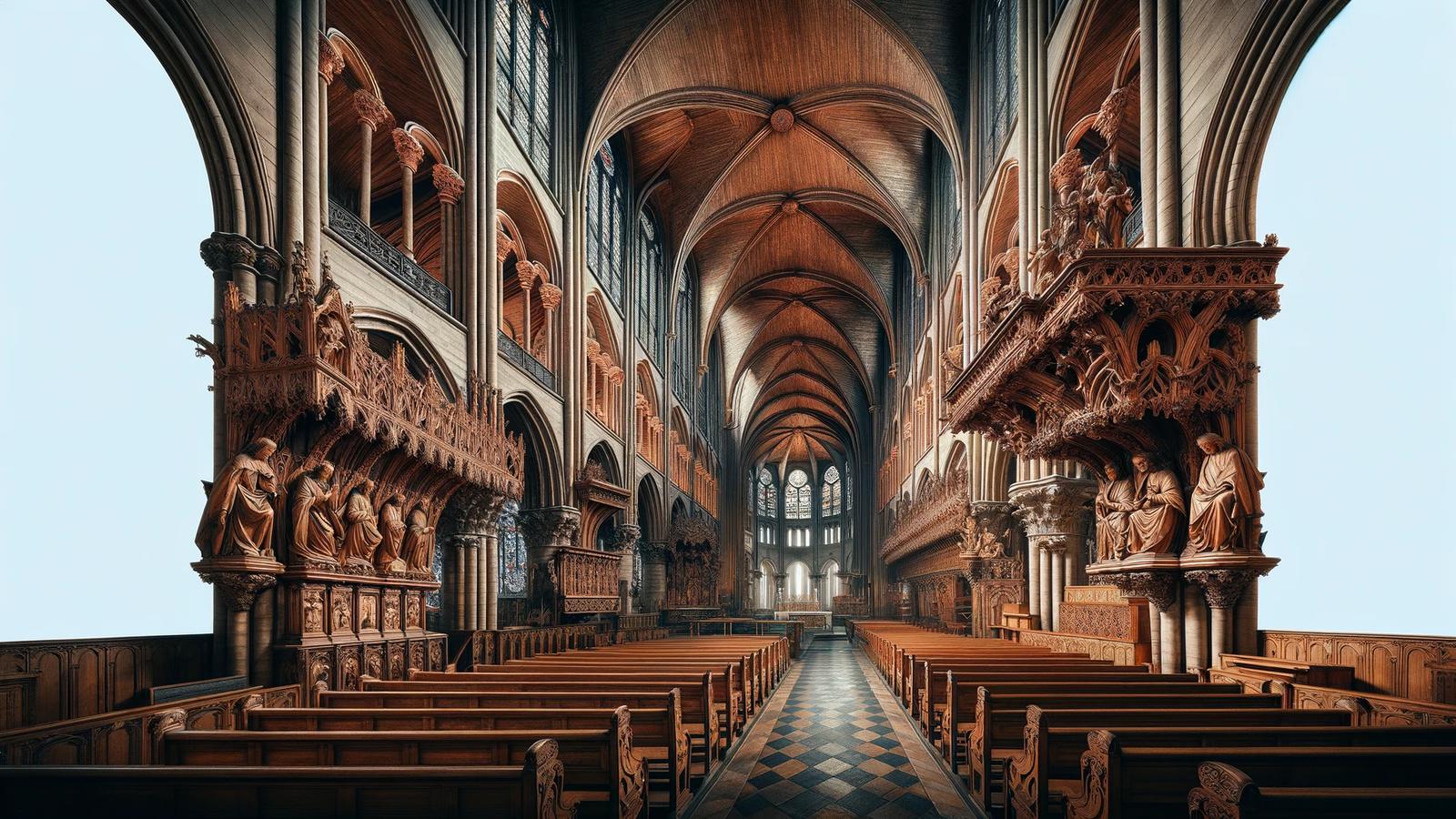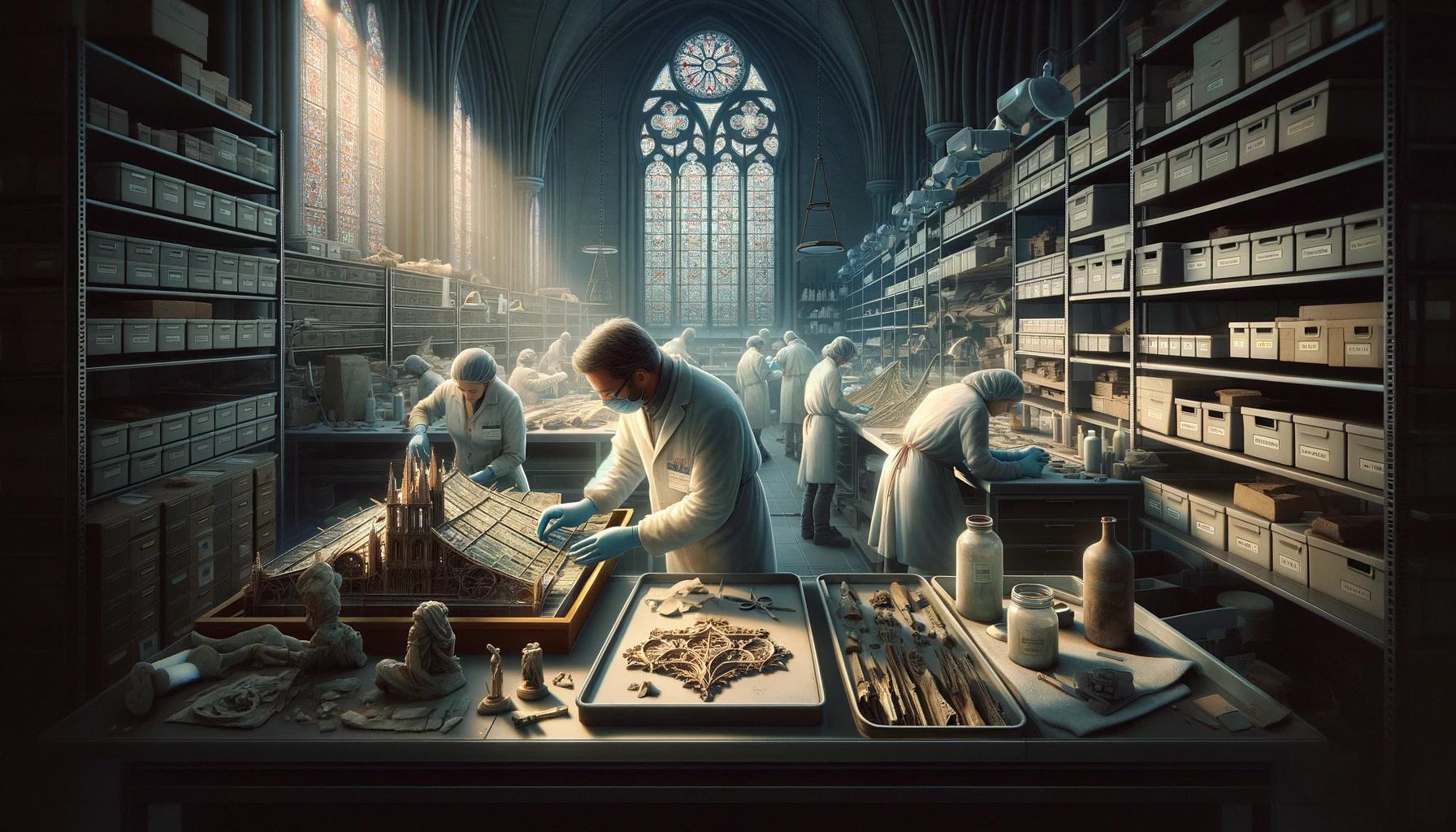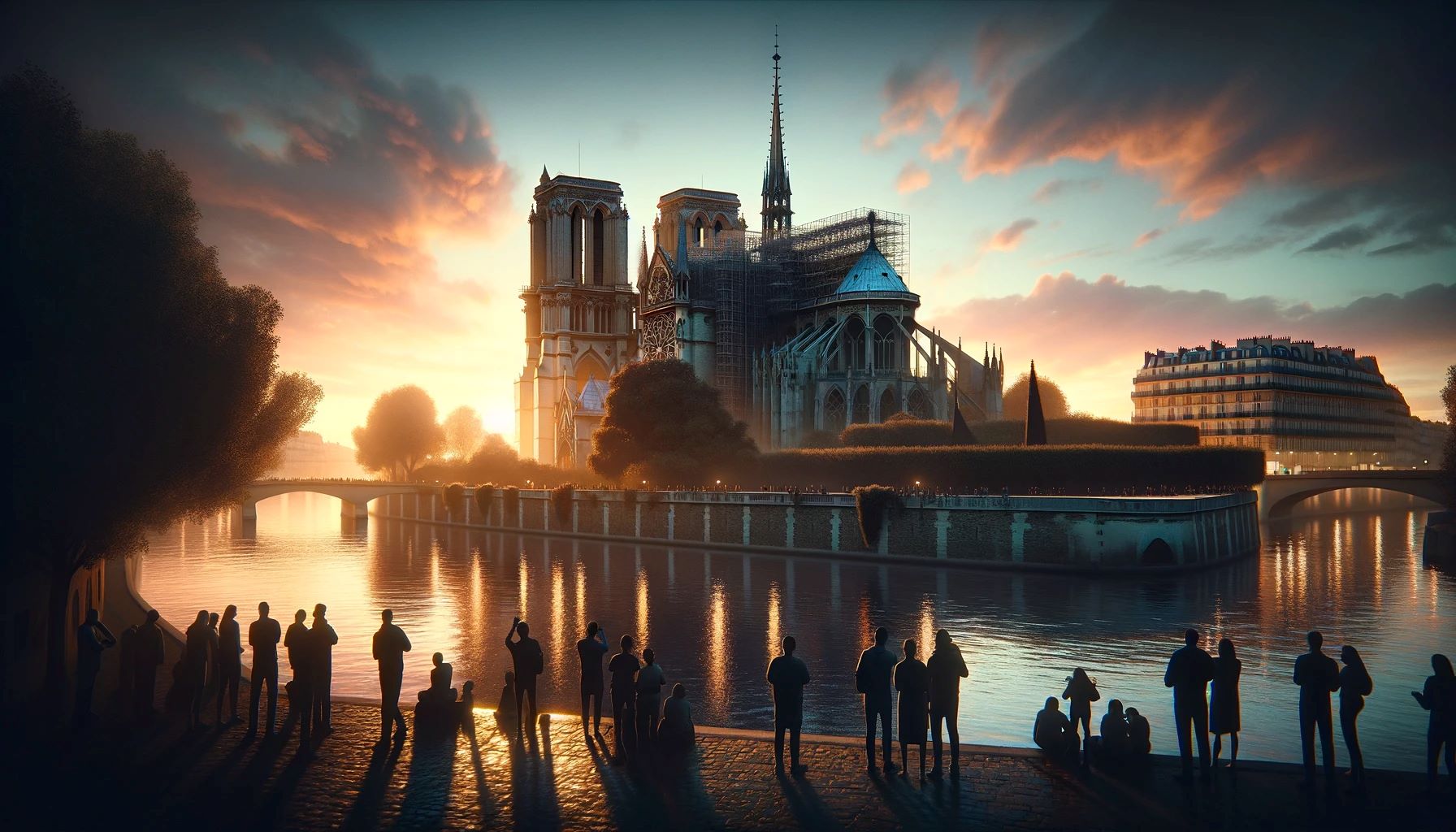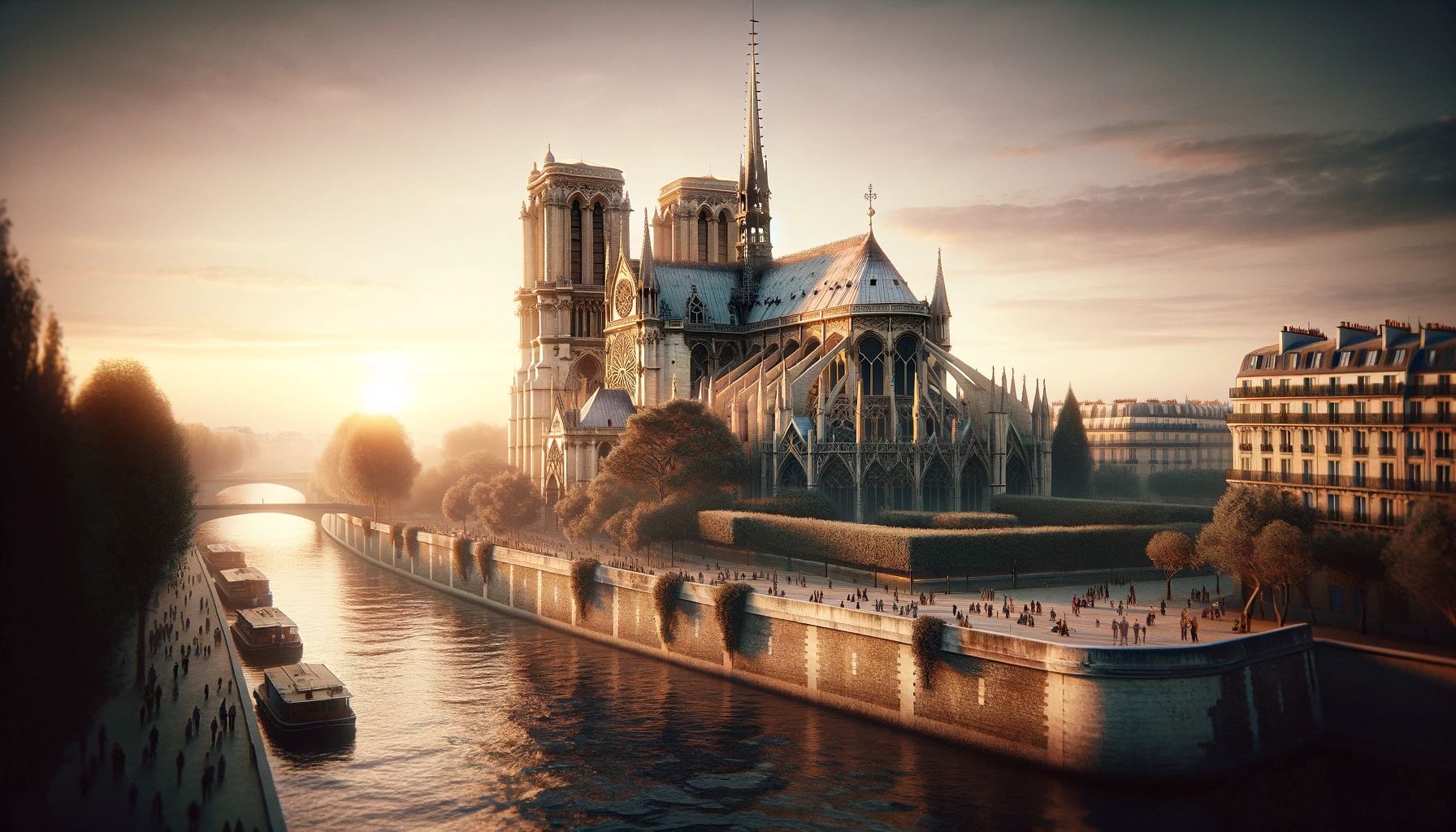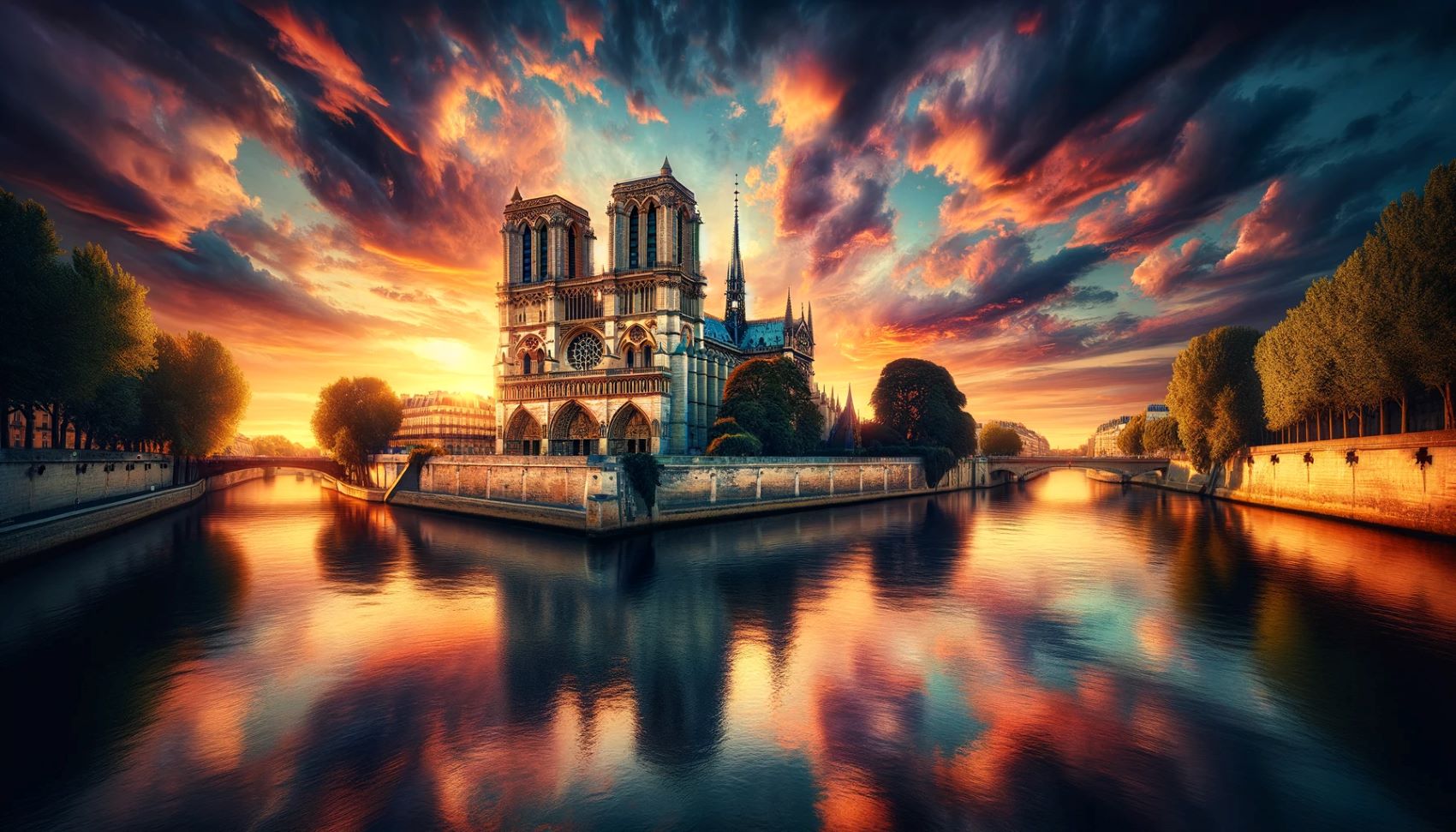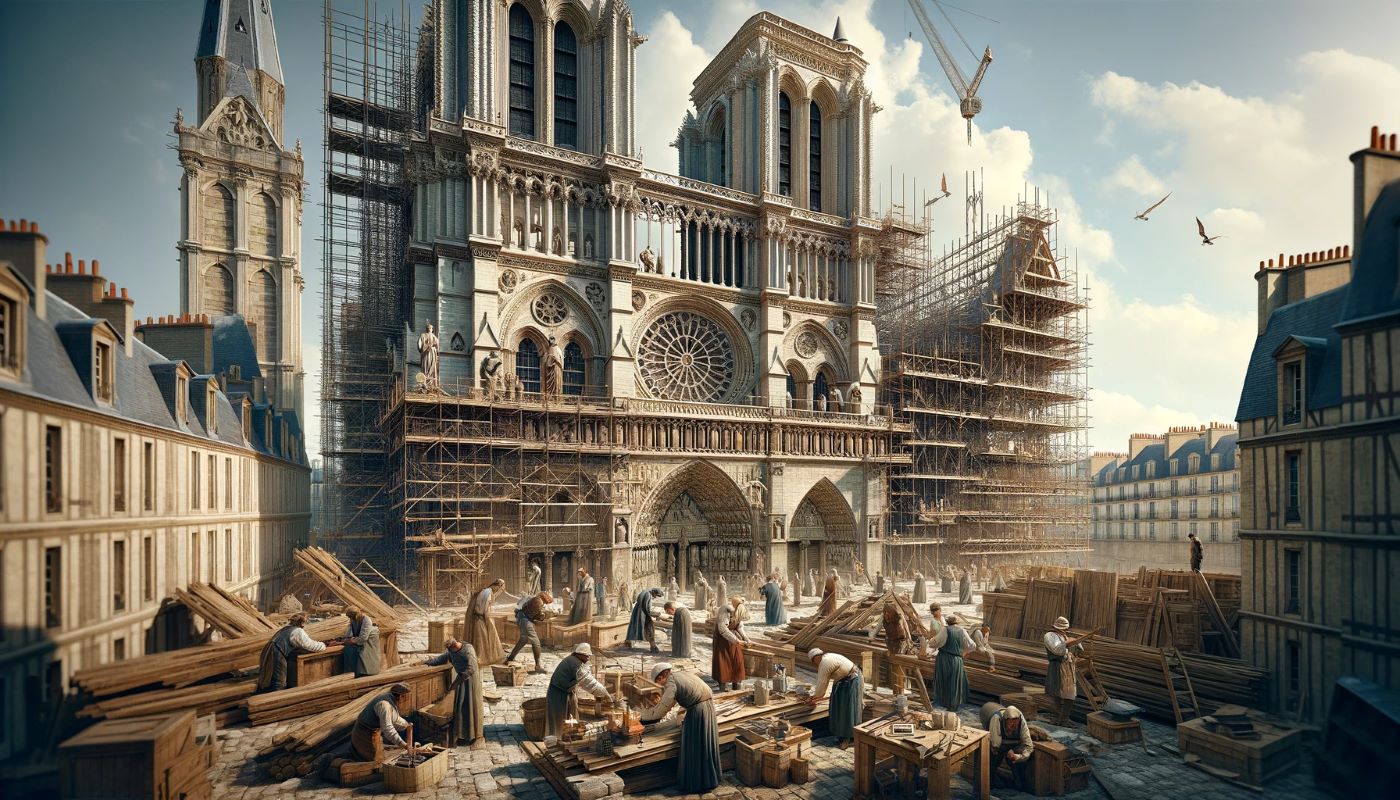Home>Arts and Culture>What Style Is The Notre Dame Cathedral
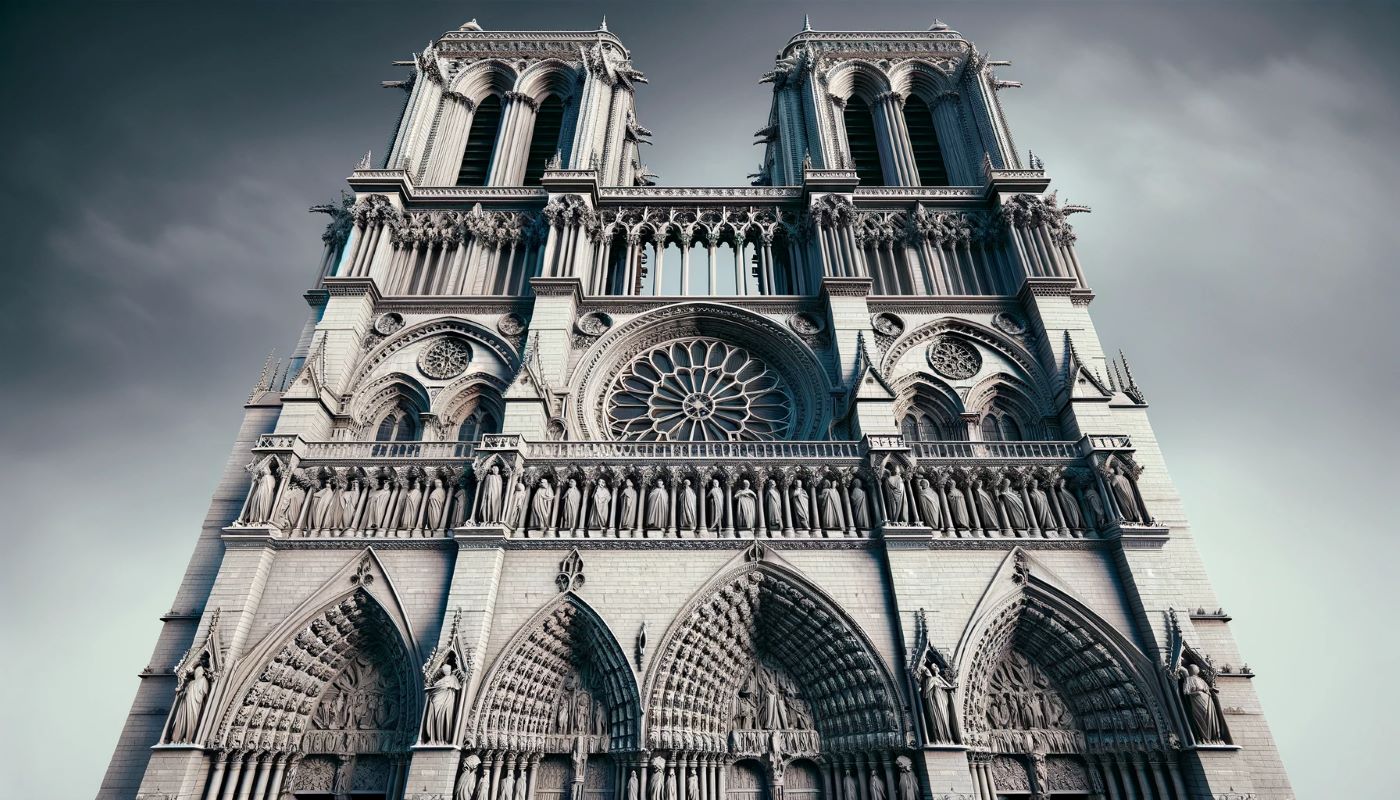

Arts and Culture
What Style Is The Notre Dame Cathedral
Published: February 18, 2024
Peter Smith, Editorial Director at Christian.net, combines deep insights into faith, politics, and culture to lead content creation that resonates widely. Awarded for his contributions to religious discourse, he previously headed a major organization for religious communicators, enhancing dialogue on faith's societal impacts.
Discover the architectural and artistic style of the Notre Dame Cathedral in this insightful exploration of arts and culture. Uncover the history and significance of this iconic masterpiece.
(Many of the links in this article redirect to a specific reviewed product. Your purchase of these products through affiliate links helps to generate commission for Christian.net, at no extra cost. Learn more)
Table of Contents
Introduction
The Notre Dame Cathedral, a timeless symbol of Paris, stands as a testament to the ingenuity and artistry of human civilization. This architectural marvel has captivated the hearts and minds of people from around the world for centuries, drawing millions of visitors annually to marvel at its grandeur. The Notre Dame Cathedral is not only a place of worship but also a living embodiment of history, culture, and architectural excellence.
As we delve into the intricacies of the Notre Dame Cathedral's architectural style, we embark on a journey through time, exploring the influences, features, and significance of this iconic structure. From its humble beginnings to its enduring legacy, the Notre Dame Cathedral continues to inspire awe and admiration, serving as a living testament to the craftsmanship and vision of its creators.
In the following sections, we will unravel the rich tapestry of the Notre Dame Cathedral's architectural style, shedding light on the historical context, influences, and distinctive features that have solidified its place as a pinnacle of Gothic architecture. Join us as we embark on a captivating exploration of this architectural masterpiece, delving into the intricate details that have made the Notre Dame Cathedral an enduring symbol of human achievement and artistic brilliance.
History of the Notre Dame Cathedral
The history of the Notre Dame Cathedral is a captivating tale that spans over eight centuries, marked by triumphs, tribulations, and enduring resilience. Construction of this magnificent edifice commenced in 1163 during the reign of King Louis VII and was completed in 1345, spanning multiple generations of skilled craftsmen and visionary architects. The cathedral's location on the Île de la Cité, an island in the heart of Paris, holds significant historical and cultural importance, as it was the site of earlier Roman and Gallo-Roman settlements.
The foundation stone was laid by Pope Alexander III, and over the centuries, the cathedral bore witness to pivotal moments in French history, including the coronation of Henry VI of England in 1431 and the coronation of Napoleon Bonaparte in 1804. However, the Notre Dame Cathedral also endured periods of neglect and faced the threat of destruction during the French Revolution. It was only through the dedicated efforts of individuals such as Victor Hugo, whose novel "The Hunchback of Notre-Dame" brought attention to the cathedral's plight, that its restoration and preservation were championed.
Tragically, on April 15, 2019, a devastating fire engulfed the cathedral, causing significant damage to its roof and spire. The world watched in collective anguish as the iconic structure faced potential destruction. However, the outpouring of support and the swift response to restore the cathedral underscored its profound significance as a cultural and architectural treasure.
The history of the Notre Dame Cathedral is a testament to the enduring spirit of human endeavor and the resilience of cultural heritage. Its story is intertwined with the narrative of Paris itself, reflecting the ebbs and flows of history while standing as a timeless symbol of faith, artistry, and the enduring legacy of generations past.
Architectural Style of the Notre Dame Cathedral
The Notre Dame Cathedral stands as a quintessential example of French Gothic architecture, characterized by its soaring spires, intricate rose windows, and flying buttresses. This architectural style emerged during the High Middle Ages, reflecting the cultural and artistic advancements of the era. The cathedral's design embodies the principles of Gothic architecture, which sought to create awe-inspiring spaces that transcended earthly limitations and evoked a sense of divine splendor.
Gothic architecture, prevalent in Europe from the 12th to the 16th century, is distinguished by its use of pointed arches, ribbed vaults, and slender columns, all of which are prominently featured in the Notre Dame Cathedral. The cathedral's facade is adorned with intricate stone carvings and sculptures, depicting biblical narratives and celestial beings, adding a layer of spiritual symbolism to its architectural grandeur.
One of the defining features of the Notre Dame Cathedral's architectural style is its use of flying buttresses, external supports that counteract the outward thrust of the vaulted ceilings, allowing for the construction of taller and more expansive interior spaces. These flying buttresses, coupled with the cathedral's ribbed vaults, enabled the architects to achieve unprecedented heights and create a sense of ethereal lightness within the structure.
The iconic rose windows, another hallmark of Gothic architecture, adorn the Notre Dame Cathedral with their kaleidoscopic splendor, infusing the interior with a celestial glow. These stained glass masterpieces depict biblical scenes and intricate geometric patterns, serving as a visual representation of divine radiance and spiritual enlightenment.
Furthermore, the cathedral's spire, though tragically lost in the 2019 fire, was a testament to the vertical aspirations of Gothic architecture, reaching skyward as if to bridge the earthly realm with the heavens above. Its intricate tracery and delicate form exemplified the Gothic ideal of transcending the material world through architectural expression.
The Notre Dame Cathedral's architectural style, rooted in the principles of Gothic design, continues to inspire awe and reverence, serving as a testament to the ingenuity and artistic vision of its creators. Its enduring legacy as a masterpiece of Gothic architecture solidifies its place as a cultural treasure and a timeless symbol of human aspiration and creative brilliance.
Influences on the Notre Dame Cathedral's Style
The architectural style of the Notre Dame Cathedral was profoundly influenced by a confluence of artistic, cultural, and technological factors that shaped the trajectory of Gothic architecture during the High Middle Ages. The cathedral's design and construction were not isolated endeavors but rather a culmination of diverse influences that left an indelible mark on its iconic style.
One of the primary influences on the Notre Dame Cathedral's style was the innovative spirit of the medieval era, which witnessed significant advancements in engineering and construction techniques. The development of ribbed vaults, pointed arches, and flying buttresses revolutionized architectural possibilities, allowing for the creation of soaring, light-filled spaces that defied conventional limitations. These technological innovations, coupled with a burgeoning understanding of structural mechanics, provided the foundation for the cathedral's awe-inspiring design.
Furthermore, the cultural and artistic milieu of 12th-century France played a pivotal role in shaping the Notre Dame Cathedral's style. The rise of Gothic architecture was intertwined with the flourishing intellectual and artistic climate of the period, marked by a renewed interest in classical learning and a fervent pursuit of spiritual expression. The cathedral's architects drew inspiration from the philosophical and theological currents of the time, seeking to translate divine ideals into tangible form through the language of architecture.
Moreover, the Notre Dame Cathedral's style bore the imprint of religious symbolism and devotion, reflecting the profound influence of Christian faith on its design. Every facet of the cathedral, from its intricate sculptures to its celestial windows, served as a testament to the spiritual aspirations of its creators. The fusion of art and faith gave rise to a style that transcended mere aesthetics, embodying a profound sense of reverence and transcendence.
Additionally, the Notre Dame Cathedral's style was shaped by the collective efforts of skilled artisans, craftsmen, and master builders who contributed their expertise to bring the architectural vision to fruition. Their collective knowledge, honed through generations of craftsmanship, infused the cathedral with a sense of meticulous detail and artistic finesse, elevating it to a pinnacle of Gothic expression.
The influences on the Notre Dame Cathedral's style, spanning technological innovation, cultural dynamism, religious fervor, and artisanal expertise, converged to create an architectural masterpiece that continues to inspire wonder and admiration. The cathedral stands as a testament to the rich tapestry of influences that shaped its style, embodying the collective aspirations and achievements of an era defined by creative and intellectual fervor.
Features of the Notre Dame Cathedral's Style
The Notre Dame Cathedral's architectural style encompasses a myriad of distinctive features that collectively define its timeless grandeur and enduring legacy. From its soaring spires to its intricate stone carvings, each element of the cathedral's design reflects the pinnacle of Gothic architecture and the profound artistry of its creators.
One of the most striking features of the Notre Dame Cathedral is its use of flying buttresses, external supports that elegantly counteract the outward thrust of the vaulted ceilings. These graceful arches, extending from the exterior of the cathedral, not only serve a structural purpose but also contribute to the visual splendor of the edifice. By allowing for the construction of taller and more expansive interior spaces, the flying buttresses exemplify the innovative engineering and architectural prowess of the medieval craftsmen.
The cathedral's facade is adorned with a wealth of intricate stone carvings and sculptures, each bearing testament to the skill and artistry of the craftsmen who brought them to life. These sculptural embellishments depict a rich tapestry of biblical narratives, celestial beings, and symbolic motifs, infusing the exterior of the cathedral with a profound sense of spiritual symbolism and artistic expression.
A hallmark of the Notre Dame Cathedral's style is its resplendent rose windows, which adorn the structure with their kaleidoscopic radiance. These stained glass marvels, characterized by their intricate tracery and vibrant hues, depict biblical scenes and celestial imagery, casting a celestial glow within the cathedral's interior. The interplay of light and color through the rose windows creates an ethereal ambiance, evoking a sense of divine transcendence and spiritual enlightenment.
Furthermore, the cathedral's spire, though tragically lost in the 2019 fire, remains an indelible feature of its architectural style. The spire, with its delicate tracery and soaring form, epitomized the vertical aspirations of Gothic architecture, reaching skyward as if to bridge the earthly realm with the heavens above. Its loss serves as a poignant reminder of the cathedral's enduring resilience and the collective efforts to preserve its architectural heritage.
The Notre Dame Cathedral's style, characterized by its flying buttresses, sculptural adornments, resplendent rose windows, and majestic spire, stands as a testament to the ingenuity, artistry, and spiritual devotion of its creators. Each feature contributes to the cathedral's timeless allure, inviting visitors to marvel at the intersection of divine inspiration and human craftsmanship embodied within its hallowed walls.
Conclusion
In conclusion, the Notre Dame Cathedral stands as a timeless testament to the enduring legacy of Gothic architecture, embodying the collective aspirations, ingenuity, and artistic brilliance of the medieval era. From its humble origins in the 12th century to its enduring presence as a cultural icon, the cathedral has weathered the tides of history, bearing witness to triumphs, tribulations, and the unwavering spirit of human endeavor.
The architectural style of the Notre Dame Cathedral, rooted in the principles of Gothic design, reflects a profound synthesis of technological innovation, cultural dynamism, religious symbolism, and artisanal expertise. Its soaring spires, intricate rose windows, and graceful flying buttresses stand as a testament to the visionary spirit of its creators, who sought to transcend earthly limitations and evoke a sense of divine splendor through their craft.
The influences on the Notre Dame Cathedral's style, spanning technological innovation, cultural dynamism, religious fervor, and artisanal expertise, converged to create an architectural masterpiece that continues to inspire wonder and admiration. The cathedral stands as a testament to the rich tapestry of influences that shaped its style, embodying the collective aspirations and achievements of an era defined by creative and intellectual fervor.
As the Notre Dame Cathedral embarks on a journey of restoration and renewal following the 2019 fire, its enduring legacy as a masterpiece of Gothic architecture serves as a beacon of hope and resilience. The outpouring of global support and the unwavering commitment to its preservation underscore the cathedral's profound significance as a cultural and architectural treasure.
In the heart of Paris, the Notre Dame Cathedral stands as a living testament to the enduring spirit of human creativity, the resilience of cultural heritage, and the timeless allure of architectural mastery. Its architectural style, characterized by its soaring spires, resplendent rose windows, and graceful flying buttresses, continues to captivate the hearts and minds of visitors, inviting them to partake in a journey through history, art, and the boundless aspirations of the human spirit.

